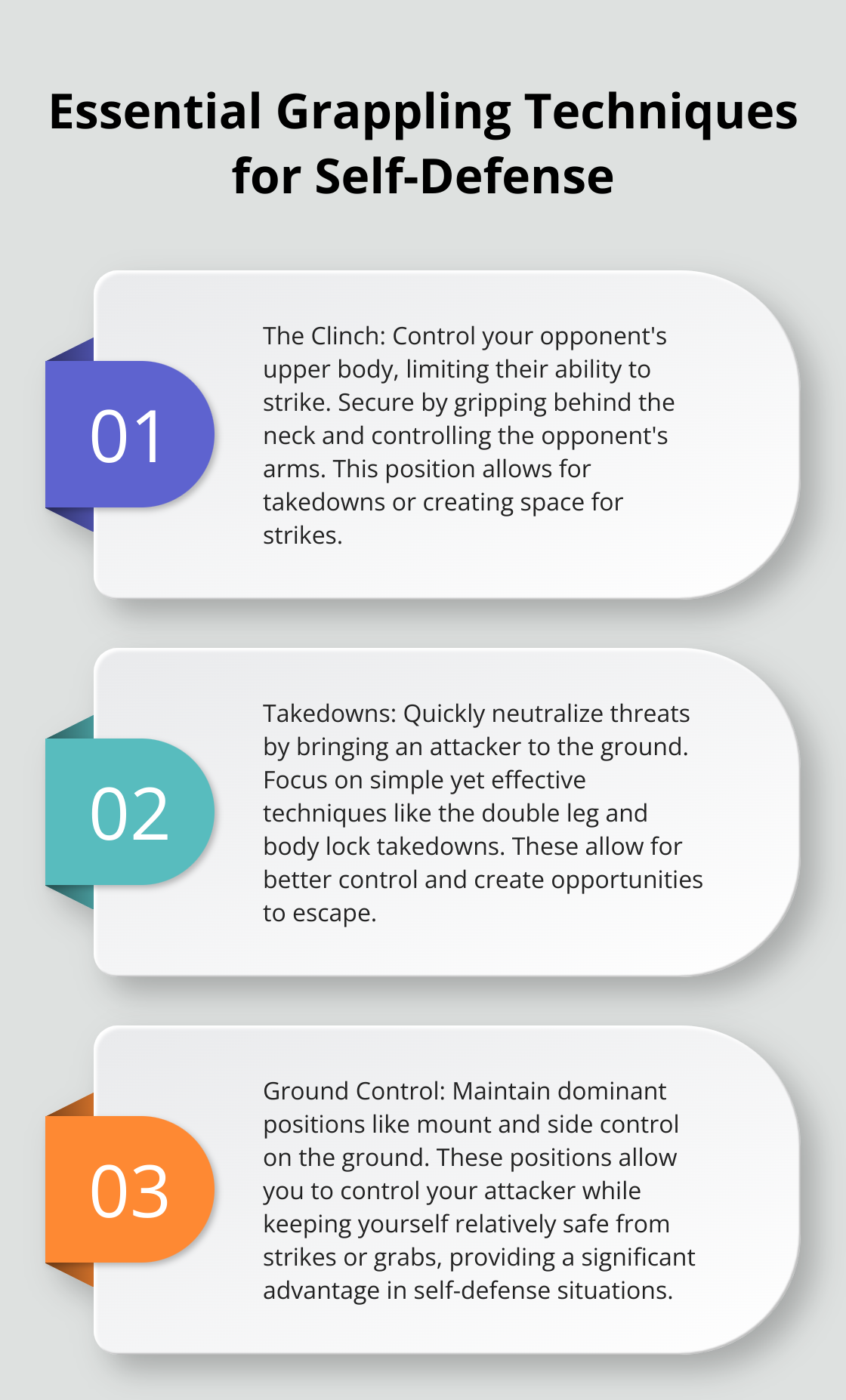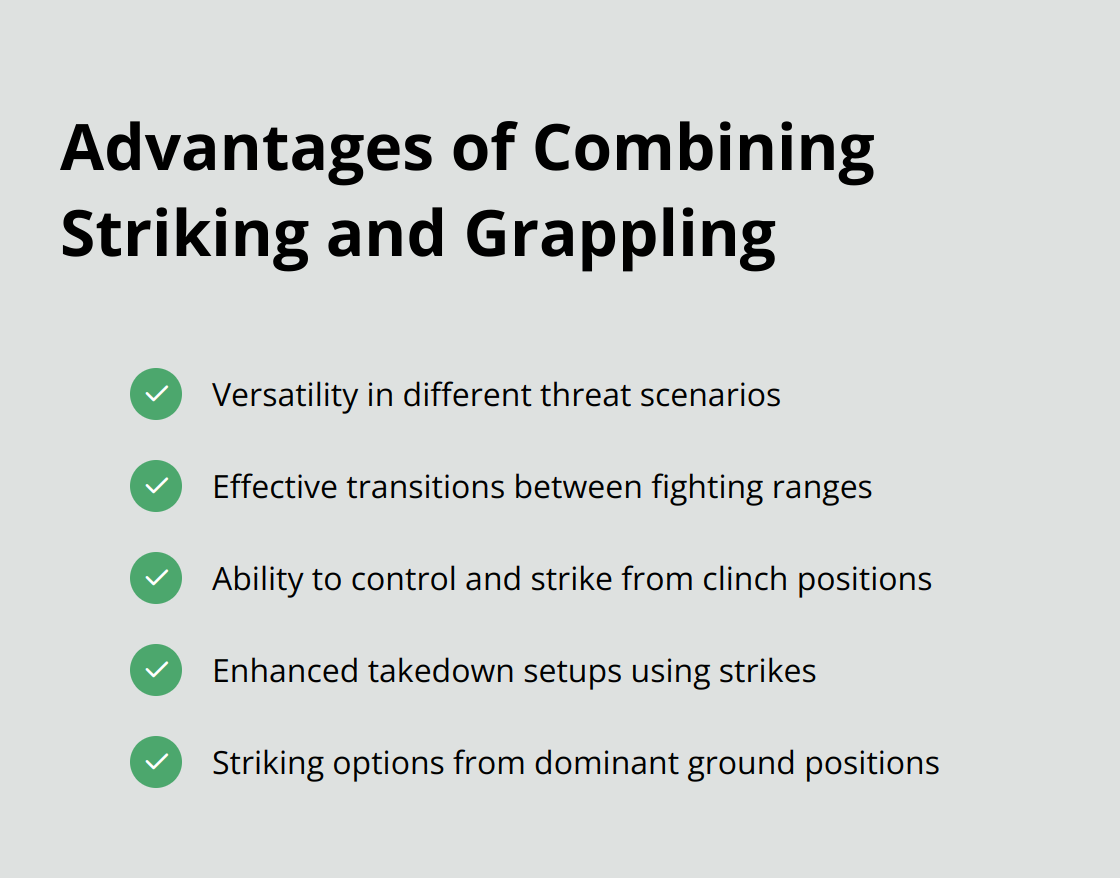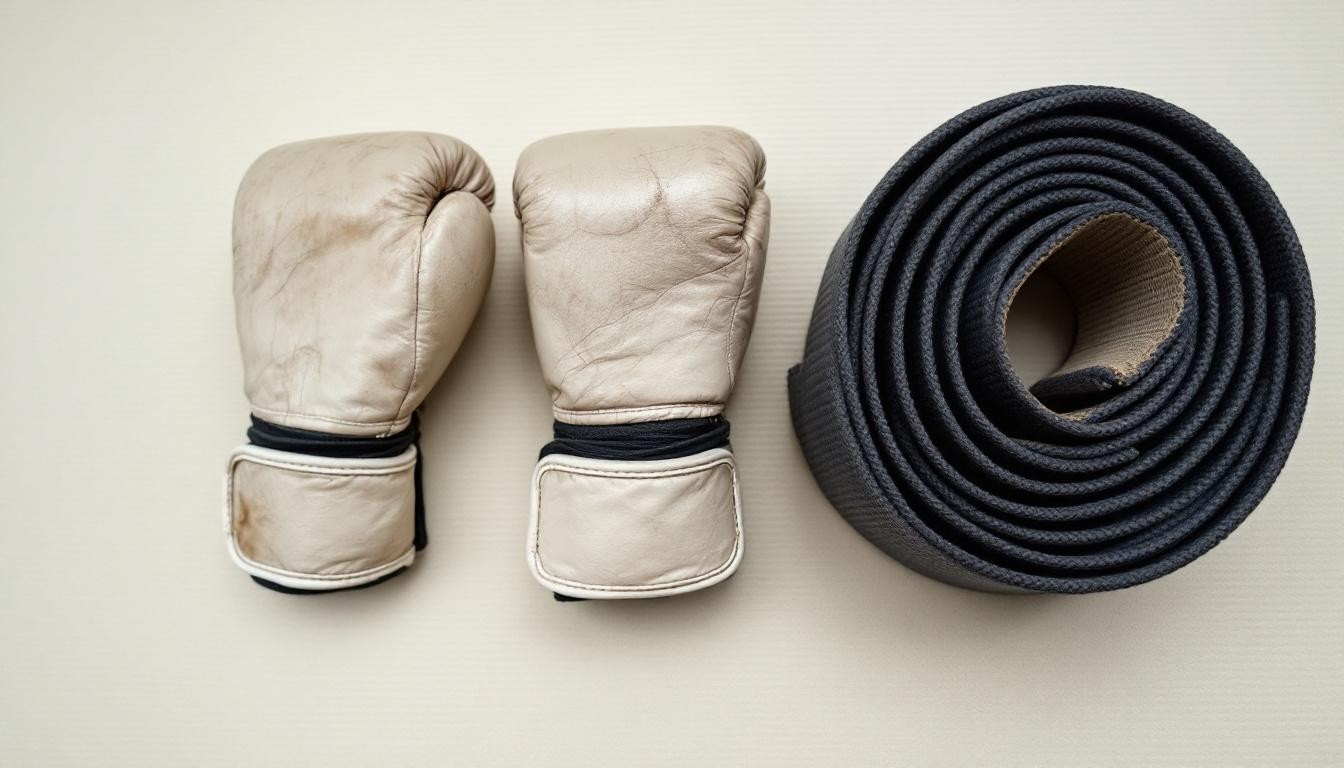At Jiu jitsu, we often get asked about the effectiveness of different martial arts for self-defense. The debate of Jiu Jitsu vs Muay Thai is common, but both striking and grappling have their merits.
In this post, we’ll explore the strengths of each approach and how they can be combined for comprehensive self-protection. We’ll also share practical tips to enhance your skills in both disciplines.
Striking Techniques That Pack a Punch
At Souza Grappling Co., we teach a variety of powerful striking methods that can help you protect yourself in dangerous situations. These techniques form the backbone of many effective self-defense strategies.
The Power of the Jab
The jab is often underestimated, but it’s a game-changer in self-defense. This quick, straight punch can create distance, disrupt an attacker’s balance, and set up more powerful strikes. In our Muay Thai classes, we emphasize proper jab technique. Students learn to snap their fists forward while pivoting their lead foot for maximum impact.
Elbow Strikes for Close Encounters
When an attacker gets too close, elbow strikes become invaluable. These devastating blows can cause significant damage even in tight spaces. We train our students to use both horizontal and vertical elbow strikes, targeting vulnerable areas like the jaw, temple, or nose. A study compared the average peak force among three punches and estimated the probability of achieving a skull bone fracture.
Kicks That Create Distance
Low kicks to the legs can quickly incapacitate an attacker and create space for escape. Our instructors focus on teaching students how to deliver powerful low kicks without compromising balance. We also cover push kicks (or teeps), which can effectively keep an aggressor at bay. These kicks target the abdomen or thighs, momentarily stunning the attacker and providing an opportunity to flee or follow up with other techniques.
Effective Training Methods
Training these striking techniques requires dedication and practice. At Souza Grappling Co., we use a combination of heavy bag work, partner drills, and situational sparring to help students internalize these skills. Our goal is to ensure that if you ever need to use these techniques in real life, your body will react instinctively and effectively.

Striking can be a powerful deterrent, but it’s just one piece of the self-defense puzzle. Next, we’ll explore how grappling techniques can complement your striking skills for a well-rounded approach to personal protection.
Grappling Mastery for Close-Quarter Defense
At Souza Grappling Co., we recognize that not all self-defense situations allow for striking. That’s why we emphasize grappling techniques in our training programs. Grappling proves especially effective in close-quarter combat, where strikes might be less effective or even impossible to execute.
The Power of the Clinch
One of the first grappling techniques we teach is the clinch. This position allows you to control your opponent’s upper body, limiting their ability to strike effectively. In our classes, students learn to secure a clinch by gripping behind the neck and controlling the opponent’s arms. From this position, you can execute takedowns or create space for strikes.
Takedowns for Control
Takedowns play a vital role in self-defense situations where you need to quickly neutralize a threat. We focus on simple yet effective takedowns like the double leg and the body lock. These techniques allow you to bring an attacker to the ground, where you can better control them or create an opportunity to escape.
Ground Control Fundamentals
Once on the ground, maintaining dominant position becomes key. We teach students how to achieve and hold positions like mount and side control. These positions allow you to control your attacker while keeping yourself relatively safe from strikes or grabs. A study published in the Journal of Strength and Conditioning Research analyzed 279 amateur male MMA matches fought in 2018, using the Tukey Honest Significance Differences test (Tukey HSD) to examine the efficiency of standing work versus ground-work.
Practical Drills and Training
At Souza Grappling Co., we put a strong emphasis on practical drills to ingrain these techniques. Our students regularly practice situational sparring, starting from various positions to simulate real-world scenarios. We also incorporate resistance training to build the strength and endurance needed for effective grappling.

Grappling can be highly effective, but it represents just one part of a comprehensive self-defense strategy. In our next section, we’ll explore how to combine striking and grappling (two essential components of self-defense) for maximum effectiveness in various real-world situations.
Blending Strikes and Grapples for Effective Defense
At Souza Grappling Co., we advocate for a comprehensive approach to self-defense. The combination of striking and grappling techniques creates a versatile skill set that adapts to various threat scenarios. Let’s explore how these two disciplines work together to enhance your personal safety.
The Clinch-to-Strike Transition
One of the most effective combinations we teach is the clinch-to-strike transition. This technique allows you to control an attacker using grappling, then create space for powerful strikes. You might secure a Thai clinch, then use knee strikes to the body or elbows to the head. This combination proves particularly effective in close-quarter situations where pure striking might be limited.
Takedowns as a Setup for Ground Control
Another powerful combination involves the use of striking to set up a takedown, followed by a transition to ground control. At Souza Grappling Co., students learn to use feints or quick jabs to distract an opponent, then execute a double-leg takedown. Once on the ground, you can apply submission holds or maintain a dominant position until help arrives.
Striking from Dominant Positions
Ground control doesn’t preclude striking opportunities. We train our students to strike effectively from dominant grappling positions. For instance, when in mount position, you can deliver powerful punches or elbows while maintaining control. This combination of grappling control and striking offense can quickly end a confrontation.
A study analyzing 279 amateur male MMA matches fought in 2018 from the International Mixed Martial Arts Federation (IMMAF) provides insights into the effectiveness of different techniques in MMA competitions.
Real-World Applications
At Souza Grappling Co., we focus on practical, real-world applications of these combined techniques. Our training scenarios simulate common threat situations, allowing students to practice seamless transitions between striking and grappling. This approach ensures that you’re prepared for whatever challenges you might face in a self-defense situation.

Adaptability: The Key to Effective Self-Defense
The mastery of both striking and grappling techniques, and learning to combine them effectively, will equip you to handle a wide range of potential threats. Our expert instructors at Souza Grappling Co. dedicate themselves to helping you develop these important skills in a safe, supportive environment (with a focus on real-world applicability).
Final Thoughts
Striking and grappling offer distinct advantages in self-defense situations. The Jiu Jitsu vs Muay Thai debate highlights the strengths of each discipline, but a comprehensive approach combines both. Versatility and adaptability form the foundation of effective self-defense, allowing seamless transitions between different fighting ranges and scenarios.
Regular training develops muscle memory and instincts needed to apply these skills under pressure. At Souza Grappling Co., we provide an environment to hone your skills in both striking and grappling disciplines. Our instructors guide you through practical drills and realistic scenarios, preparing you for potential challenges.
Self-defense encompasses physical techniques, awareness, prevention, and smart decision-making. We encourage you to explore both striking and grappling at Souza Grappling Co., where you can benefit from our approach to martial arts training (including Jiu Jitsu and Muay Thai). Take the first step towards a safer, stronger you by joining our community of martial artists and self-defense enthusiasts.




